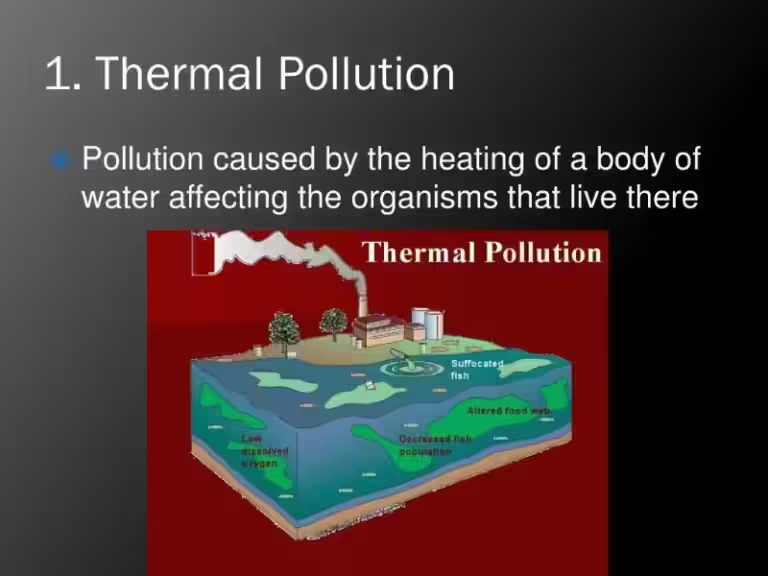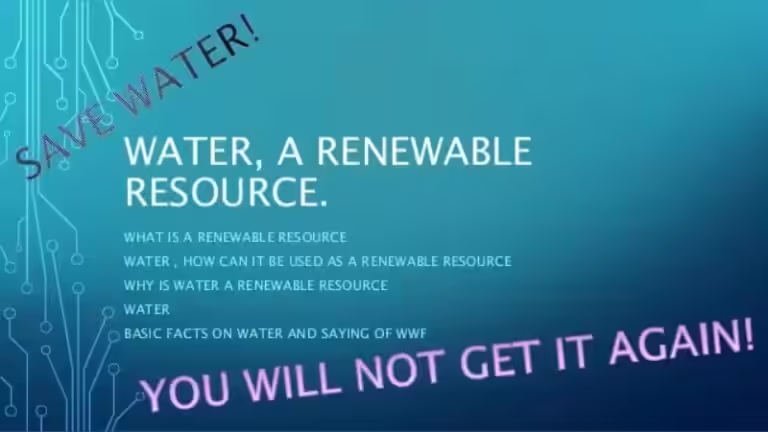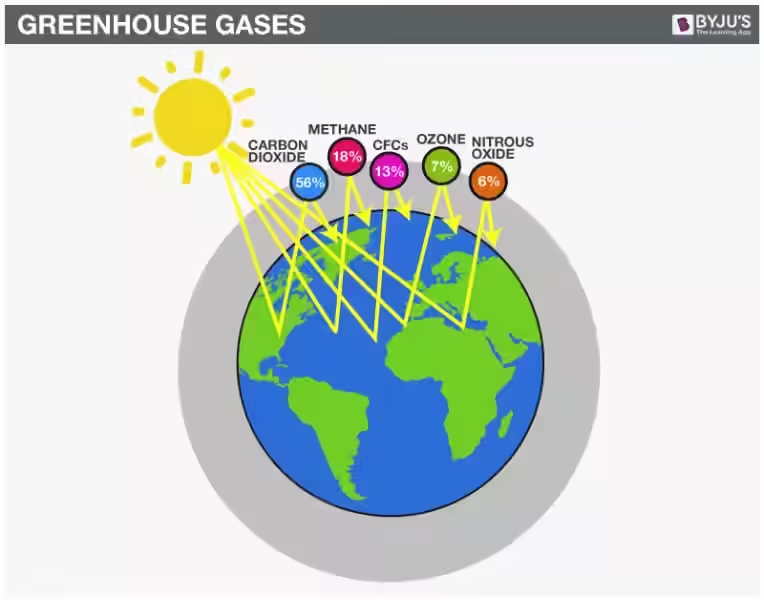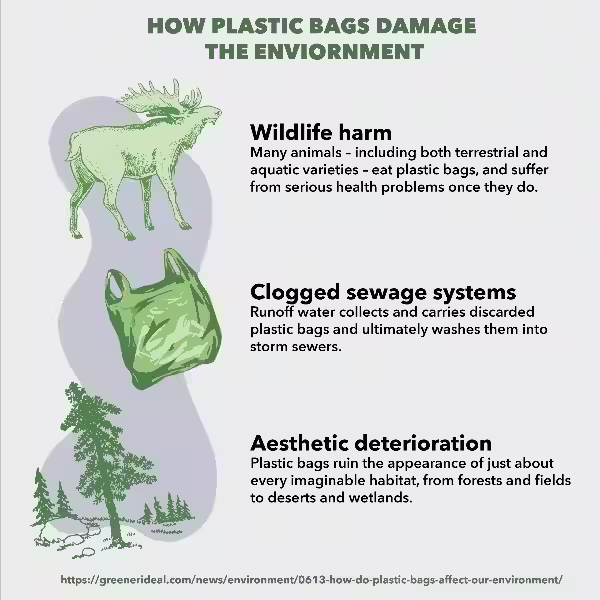Unseen Threat: How Heat Can Pollute Our Water

When we think of water pollution, images of oil spills, plastic waste, and industrial runoff often come to mind. However, there's a less visible but equally harmful polluter lurking beneath the surface: heat. While it may seem counterintuitive, excessive heat can significantly impact water quality, creating a cascade of negative consequences for both aquatic life and human health.
Imagine a glass of water left out in the sun. As the sun's rays beat down, the water gradually warms. Now, scale that up to a massive body of water like a lake or river. This is the essence of thermal pollution, where the temperature of a water body increases due to external sources. While natural factors like sunlight can contribute to warming, human activities play a major role in exacerbating this issue.
The Heat is On: Sources of Thermal Pollution
A variety of human activities can lead to thermal pollution, each contributing to the overall rise in water temperatures. Let's explore some of the key culprits:
Power Plants: The Big Heat Emitters
Power plants, especially those that rely on fossil fuels, are major contributors to thermal pollution. These facilities use water for cooling purposes, drawing it from nearby rivers, lakes, or oceans. The water is then used to cool down the plant’s machinery before being discharged back into the water body, but at a significantly higher temperature. This heated water can disrupt the delicate balance of the aquatic ecosystem.
Imagine a hot tub suddenly dumped into a cool swimming pool. The water temperature would rise, making it uncomfortable for swimmers and potentially harming sensitive aquatic life.
Industrial Discharge: A Hot Mess
Industrial processes often involve the use of heated water, which is frequently discharged into nearby waterways. Manufacturing plants, refineries, and chemical facilities are among the industries that contribute to thermal pollution. The discharge of this heated water can raise the overall temperature of the water body, impacting the survival and reproduction of aquatic organisms.
Think of a frying pan placed on a stove. As the pan heats up, it transfers heat to the surrounding air. Similarly, hot water discharged from industrial facilities transfers heat to the surrounding water body, raising its temperature.
Urban Runoff: A City's Heat Signature
Urban areas are notorious for generating excess heat, known as the urban heat island effect. This phenomenon arises from the concentration of buildings, roads, and other impervious surfaces, which absorb and retain heat. As rainwater flows through urban areas, it picks up this heat and carries it into nearby rivers and streams, contributing to thermal pollution.
Picture a bustling city on a sunny day. The asphalt roads, concrete buildings, and dark rooftops absorb heat, creating a warmer microclimate within the city compared to surrounding rural areas. This excess heat is then released into the waterways as stormwater runoff.
The Ripple Effect: Consequences of Thermal Pollution
Thermal pollution is not just a nuisance; it can have serious consequences for both aquatic ecosystems and human health. As water temperatures rise, a chain reaction of negative impacts unfolds.
Impact on Aquatic Life: A Silent Killer
Aquatic organisms are adapted to specific temperature ranges. When water temperatures rise beyond these limits, it can create a cascade of negative effects:
- Reduced Oxygen Levels: As water temperatures rise, its ability to hold dissolved oxygen decreases. This can lead to oxygen depletion, impacting fish and other aquatic life that rely on it for survival.
- Increased Metabolism: Warmer water speeds up the metabolic rate of aquatic organisms, causing them to require more food and oxygen. This can lead to stress and increased vulnerability to disease.
- Habitat Disruption: Increased temperatures can cause changes in the distribution and abundance of aquatic species, disrupting the delicate balance of ecosystems.
- Altered Breeding Cycles: Thermal pollution can disrupt the breeding cycles of fish and other aquatic organisms, impacting their reproductive success.
Imagine a fish struggling to breathe in a warm, oxygen-depleted pond. This is a stark reality for many aquatic organisms facing the consequences of thermal pollution.
Human Health Impacts: A Hidden Threat
The effects of thermal pollution extend beyond aquatic ecosystems, impacting human health in various ways:
- Harmful Algal Blooms: Warmer water temperatures can promote the growth of harmful algae, which produce toxins that can contaminate drinking water and shellfish, posing risks to human health.
- Spread of Disease: Increased water temperatures can create favorable conditions for the spread of waterborne diseases, such as cholera, typhoid fever, and giardia.
- Reduced Water Quality: Thermal pollution can degrade water quality, making it unsuitable for drinking, irrigation, or recreational activities.
Imagine a beautiful beach closed to swimming due to a harmful algal bloom. This is just one example of how thermal pollution can impact human activities and health.
Combating the Heat: Solutions for Thermal Pollution
While thermal pollution presents a significant challenge, there are several steps we can take to mitigate its impact and protect our water resources.
Cooling Technologies: A Shift Towards Sustainability
Power plants can adopt more efficient cooling technologies, such as dry cooling towers, which use air instead of water for cooling. This reduces the amount of heated water discharged into waterways. They can also utilize alternative energy sources, such as solar and wind power, which produce less heat and reduce reliance on fossil fuels.
Imagine a power plant using solar panels to generate electricity, minimizing its reliance on fossil fuels and reducing its heat emissions.
Industrial Efficiency: Reducing Heat Emissions
Industries can implement water-efficient processes and adopt technologies that reduce heat emissions. This can involve using alternative cooling systems, recycling water, and minimizing waste generation. Investing in research and development of cleaner technologies is crucial to create a more sustainable future.
Imagine a factory using recycled water for cooling purposes, reducing its reliance on fresh water and minimizing heat discharge.
Urban Planning: Building a Cooler City
Urban planners can play a role in mitigating thermal pollution by incorporating green spaces, planting trees, and using reflective building materials to reduce the urban heat island effect. This can help lower the temperature of runoff water entering waterways.
Imagine a city with lush parks, tree-lined streets, and buildings with green roofs, creating a cooler and more sustainable urban environment.
The Future of Water: A Cooler Perspective
Thermal pollution is a silent threat to our water resources, but by understanding its causes and consequences, we can take action to protect our aquatic ecosystems and human health. Implementing sustainable practices, investing in cleaner technologies, and embracing a cooler perspective on water management are essential steps towards a healthier and more sustainable future for all.
Frequently Asked Questions About Heat as a Source of Water Pollution
How does heat affect water quality?
Heat can negatively impact water quality by increasing water temperature. This can lead to several problems, including:
- Reduced dissolved oxygen levels: Warm water holds less dissolved oxygen than cold water, making it harder for aquatic life to survive.
- Increased algal blooms: Warmer temperatures can promote the growth of algae, which can deplete oxygen levels and release toxins.
- Changes in species composition: Some species of fish and other aquatic organisms can only tolerate a narrow range of temperatures, making them vulnerable to heat pollution.
What are the main sources of heat pollution in water?
Common sources of heat pollution include:
- Power plants: Power plants using water for cooling often discharge warm water back into rivers and lakes.
- Industrial facilities: Industries that use water for cooling processes can also contribute to heat pollution.
- Urban runoff: Runoff from paved surfaces and buildings can absorb heat from the sun and release it into waterways.
How does heat pollution affect aquatic ecosystems?
Heat pollution can disrupt the balance of aquatic ecosystems by:
- Decreasing biodiversity: Many aquatic species are sensitive to temperature changes and may struggle to survive in warmer waters.
- Altering food webs: Changes in species composition can disrupt food chains and cause imbalances in the ecosystem.
- Increasing disease outbreaks: Warmer water temperatures can create favorable conditions for the spread of diseases in aquatic organisms.
What are some solutions to prevent heat pollution?
Several measures can be taken to minimize heat pollution, including:
- Using alternative cooling methods: Power plants and industrial facilities can explore alternative cooling methods, such as dry cooling towers, to reduce heat discharge.
- Improving urban planning: Designing cities with more green spaces and permeable surfaces can help reduce heat absorption and runoff.
- Regulating water temperature discharges: Government regulations can set limits on the temperature of water discharged from industrial and power plant facilities.








